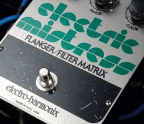
Like all of history's great rivalries, the long-fought battle between analog and digital ebbs and flows. Early digital synths were seen as convenient, affordable and more powerful than analog rivals, but their ubiquity and supposed ‘cold’ sound drove many musicians back into the warm embrace of old-fashioned circuitry.
Following the affordable analog boom back in the 2010s, recent years have seen a resurgence of digital synthesizers once again, with the likes of Korg, Modal, Waldorf and Arturia releasing sure-fire future classics that are proudly digital-by-design.
What do we mean when we say ‘digital synthesizer’? On the whole, most modern synths include at least some elements of digital technology and the plugin market is digital from top to bottom. What we're talking about here, however, are instruments that use synthesis techniques that can only exist in the digital realm. A plugin emulation of a Minimoog such as Arturia's Mini V, say, is technically a digital instrument, but as its approach to synthesis is based on replicating the workflow of a subtractive synthesizer built around analog circuitry, we'd call it a virtual analog instrument.
What we're focussing on this issue are instrument types such as FM, additive and wavetable synths – methods of creating sound that for reasons such as stability, complexity or memory, couldn't feasibly be replicated by a fully analog instrument. While there are plenty of purists who will tell you that all digital synths are poor approximations of their analog counterparts, in reality – as we'll see – nothing could be further from the truth. From the glitchy sample-mangling of granular synthesis to the complex timbres of FM, there are plenty of reasons to embrace the power of DSP-driven synthesis.
What is additive synthesis?
Unlike subtractive synthesis – ie, that found on most analog synths, where you start with a harmonically rich waveform and remove frequencies using filters –additive synthesis builds from the ground up.
It uses Fast Fourier Transform theory, which says that any audio signal, no matter how complex, can break down to a series of sine waves; you can recreate any waveform with the right combo of sine ‘building blocks’. Pile






